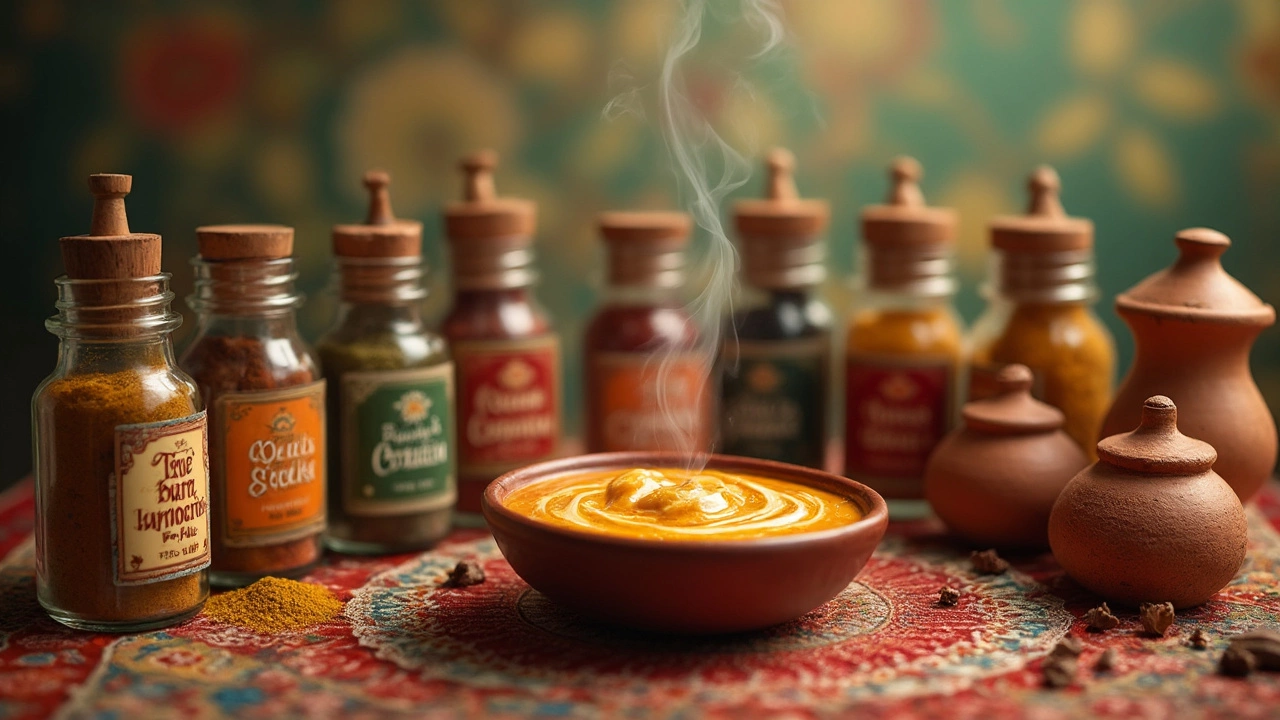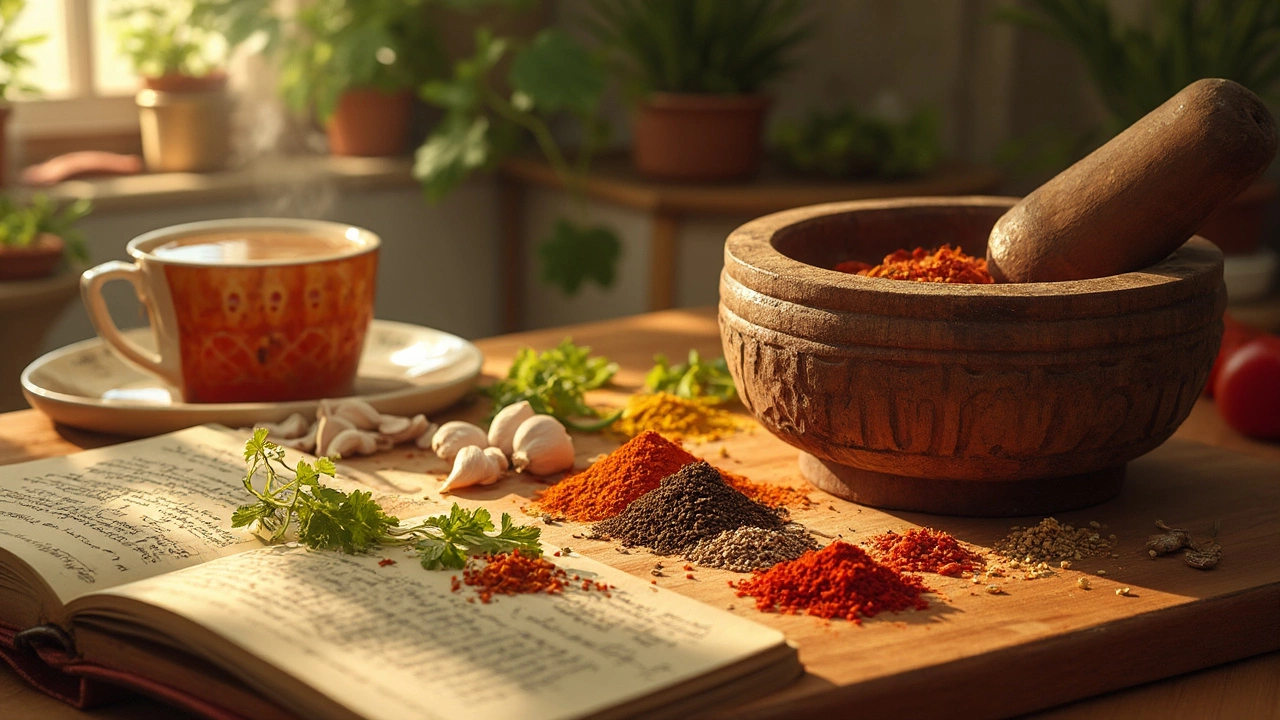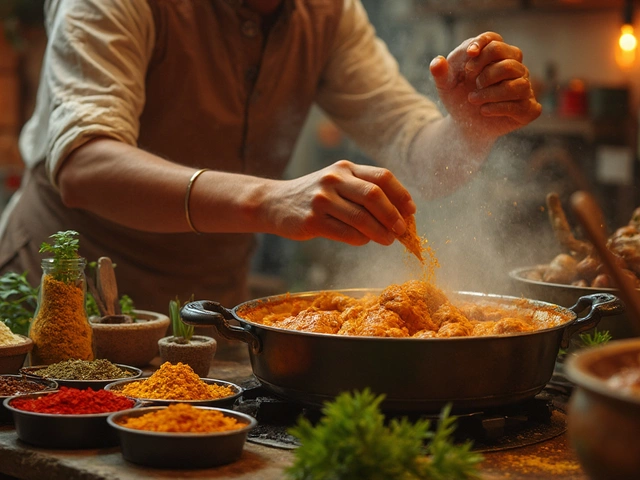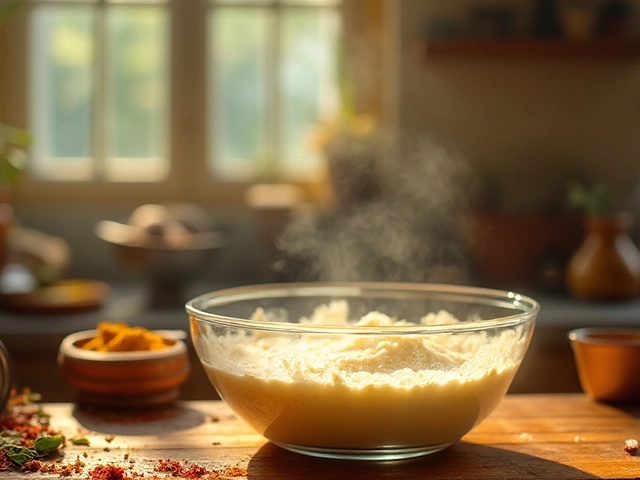If you've ever tasted the delightful zing of tandoori chicken, you've probably wondered about the magic behind that vibrant flavor. Well, my friends, it all starts with tandoori sauce! This sauce is more than just a blend of spices; it's the heart of many Indian dishes.
So, what's in this magical mix? At the core, tandoori sauce typically includes yogurt as its base, which helps tenderize the meat while adding a subtle tang. Then, there's garlic and ginger, those reliable flavor warriors found in so many cuisines.
Now, here comes the fun part—the spices! Prepare for a burst of flavors with ground cumin, coriander, and garam masala. Each spice adds a unique touch, creating that signature taste.
But here's a pro tip: making your own sauce allows you to tweak those spice levels exactly how you like. Not a fan of too much heat? Reduce the chili powder. Love the kick? Amp it up!
- Traditional Ingredients
- The Role of Yogurt
- Spices and Their Functions
- Adding a Personal Twist
- Tips for Homemade Sauce
Traditional Ingredients
Let’s talk about the backbone of tandoori sauce—the traditional ingredients that set the foundation for those mouth-watering flavors. The cornerstone of this sauce is yogurt, primarily because it has magical tenderizing properties. Not only does yogurt soften the meat, but it also infuses a mild tang that balances all the spices. Regular plain yogurt works best; Greek yogurt is an option, but it can make the sauce a bit thicker.
Next up are the dynamic duo, garlic and ginger. These two are like best friends always hanging out together—in your kitchen! Garlic adds that unmistakable punch, while ginger brings warmth and a peppery kick to the sauce. You’ll typically use them in equal parts for a balanced flavor.
Essential Spices
Now, let’s dive into the spices that give tandoori chicken its characteristic taste and aroma. Cumin and coriander are the heavy hitters here. Tandoori chicken is not complete without the earthy sweetness of cumin complementing the citrusy notes of coriander. These two never fail to elevate the dish.
Don’t forget the spice blend, garam masala, which is Indian cuisine’s secret weapon. It’s a mix of spices like cinnamon, cloves, and cardamom. Each brand has its unique blend, so pick one that aligns with your spice tolerance.
- Yogurt: Tenderizes and adds tang.
- Garlic: Adds punch.
- Ginger: Adds warmth and depth.
- Cumin: Offers an earthy sweetness.
- Coriander: Provides a citrusy layer.
- Garam Masala: Delivers aromatic complexity.
For that iconic deep red color, a pinch of food coloring or paprika does the trick. But if you're all about natural ingredients, achieving a slightly muted tone is just as tantalizing.
Interesting Tip
Did you know some cooks add lime juice to the mix? It's a wonderful way to introduce an acidic zing that brightens other flavors.
So, that's the rundown on traditional ingredients in tandoori sauce. These elements create the flavor bomb we know and adore in each delightful bite!
The Role of Yogurt
Yogurt does wonders for tandoori sauce. Why? Well, it acts as a fantastic tenderizer. When you marinate chicken in yogurt, it breaks down the protein structure, making the meat incredibly juicy. It's like giving the chicken a little spa day.
But there’s more! Yogurt not only softens the meat but also introduces a mild tang that balances the heat from the spices. This subtle tartness blends beautifully with flavors like garlic and ginger, creating a harmonious taste explosion.
The Science Behind the Magic
Ever wondered about the science at play? It's all about lactic acid in the yogurt. This mild acid works gently on the surface of the meat, tenderizing it without turning it mushy. Plus, the proteins in yogurt form a lovely coating around the spices, helping them stick to the meat better and seep into it.
Yogurt Variations
Not all yogurts are created equal! Choosing the right type matters. For tandoori sauce, go for plain full-fat or Greek yogurt. These have the perfect consistency and richness. Avoid low-fat versions as they might lack the creamy texture and effect you're aiming for.
Pro Tip: Yogurt in Tandoori Recipes
- Marinate for at least 4 hours for best results. Overnight is even better!
- Don’t worry if you spot a pink hue in the yogurt during marination; it’s perfectly normal.
- For an extra creamy sauce, strain the yogurt beforehand to remove excess water.
In short, yogurt is like the backbone of your tandoori sauce – without it, you’d lose that tender texture and crave-worthy tanginess. So, next time you're whipping up a batch, give a nod to yogurt for being such a star player in the kitchen!

Spices and Their Functions
The beauty of tandoori sauce lies in its vibrant mix of spices. Each spice plays a distinct role, contributing to that unforgettable taste we all love. Let's break it down.
Cumin and Coriander
Cumin brings a warm, earthy aroma, while coriander adds a slight citrusy note. Together, they form the backbone of many Indian sauces, including tandoori sauce. They blend harmoniously, creating a deep, layered flavor profile.
Garam Masala
Here’s where the magic truly comes alive! Garam masala is a spice mix typically made from cloves, cardamom, cinnamon, and nutmeg. It delivers a burst of warmth and a touch of sweetness. A little goes a long way to balance the flavors in tandoori chicken.
Turmeric
Besides giving your sauce that gorgeous golden hue, turmeric adds an earthy bitterness. It's also a kind of culinary superpower with health benefits like anti-inflammatory properties.
Red Chili Powder
This is your go-to for bringing the heat! But don't be afraid of it. You have total control here—dial it up or down depending on your heat tolerance. It's part of what makes tandoori dishes so exciting.
| Spice | Flavor Contribution |
|---|---|
| Cumin | Earthy and Warm |
| Coriander | Citrusy |
| Garam Masala | Warm and Sweet |
| Turmeric | Earthy and Bitter |
| Red Chili Powder | Spicy Heat |
Remember, these spices are not just about taste—they're part of the colorful culture and history behind Indian cooking. Getting to know them is like sharing in a timeless culinary tradition, so don't be afraid to experiment in your own kitchen!
Adding a Personal Twist
Tandoori sauce is versatile, which means you've got plenty of room to give it your own twist! The base ingredients are like a blank canvas, just waiting for your personal touch.
First off, if you're into that smoky flavor, try adding a bit of smoked paprika. It gives a lovely depth to the sauce that pairs incredibly well with grilled meats. And if you fancy a hint of sweetness, a dab of honey or a sprinkle of brown sugar can do the trick without overpowering the savory elements.
Adjusting the Heat Level
Love living on the spicy side? Increase the chili powder or even throw in some freshly chopped green chilies. If you're more on the mild side, reduce the chili or substitute it with sweet red pepper for taste without the heat.
Boosting the Flavor Profile
If tangy flavors are your jam, consider adding a bit of lemon juice or zest for a refreshing kick. Want it a bit nuttier? A drop or two of sesame oil can bring out an earthy base note.
- Smoked Paprika: Adds smoky depth.
- Honey/Brown Sugar: Sweetens without overpowering.
- Chili Changes: Adjust based on spice preference.
- Lemon Juice/Zest: Adds tanginess.
- Sesame Oil: Lends a nutty flavor.
Here's a fun fact: Some folks even like to sneak in a spoonful of mustard for a unique zing. And if you're aiming for a creamier texture, you might experiment with a splash of coconut milk.
Remember, the beauty of homemade tandoori sauce is that it's all about customization. Play around with these tweaks until you hit your flavor sweet spot!

Tips for Homemade Sauce
Ready to whip up a batch of tandoori sauce at home? It's a game-changer for your chicken dishes, and you can customize it to suit your taste!
Choose Fresh Ingredients
Using fresh ingredients is a total must. Reach for fresh ginger and garlic instead of powders to get the boldest flavors. Freshness can make your sauce pop. Trust me, you'll taste the difference!
Balance Your Spices
Balancing the spices is key. Start with the basics: cumin, coriander, and garam masala. Don't shy away from experimenting. Want a bit more heat? Add some chili powder or fresh green chili paste. Remember, it's all about finding your own perfect blend.
Let It Sit
Patience pays off! Once you've combined your ingredients, let your tandoori sauce sit in the fridge for at least an hour. This resting time lets the flavors meld together beautifully.
Test Before You Apply
Here's a hot tip: before slathering your chicken, test the sauce's flavor. Taste a small spoonful and adjust the seasoning as needed. Maybe a bit more salt or a dash more lemon juice?
Double It and Store It
If you're making tandoori chicken regularly, why not save some time and double the recipe? Store any extra sauce in an airtight container in the fridge. It'll be good for about a week.
| Ingredient | Role |
|---|---|
| Yogurt | Tenderizes and adds tanginess |
| Garlic & Ginger | Adds depth of flavor |
| Cumin & Coriander | Essential for earthy notes |
| Garam Masala | Complex warmth |
There you have it! With these tips, you're all set to create a homemade tandoori sauce that’s bursting with flavor. Enjoy the process and make it your own!
- Poplular Tags
- tandoori sauce
- ingredients
- tandoori chicken
- recipe











